November is National Diabetes Month in the United States, and November 14 is World Diabetes Day. In the spirit of these events, we decided to examine the economic effects of diabetes.
What is diabetes?
 Briefly, diabetes mellitus is a group of metabolic illnesses. The food you eat is normally broken down into a sugar called glucose, which is one of the body’s main sources of energy. But the body’s cells can’t use glucose without help from a hormone called insulin. With diabetes, the body is either unable to produce enough insulin or unable to effectively use insulin to control blood sugar.
Briefly, diabetes mellitus is a group of metabolic illnesses. The food you eat is normally broken down into a sugar called glucose, which is one of the body’s main sources of energy. But the body’s cells can’t use glucose without help from a hormone called insulin. With diabetes, the body is either unable to produce enough insulin or unable to effectively use insulin to control blood sugar.
Over time, high blood sugar can damage the nerves and blood vessels, causing numerous complications, such as kidney disease, heart disease, stroke, digestive problems, sexual dysfunction, vision problems, and problems with the feet. Diabetes is the leading cause of kidney failure, non-traumatic amputation of lower limbs, and new cases of blindness among adults in the United States.
There are several different types of diabetes. Type 1 diabetes is an autoimmune disease that prevents the body from producing enough insulin. It most often affects children or teenagers, and it is a lifelong illness that must be treated with daily insulin injections or an insulin pump. Only about 5% of diabetes cases in the United States are Type 1 diabetes.
The most common type of diabetes is Type 2 diabetes. Type 2 diabetes generally starts with a condition called insulin resistance in which the body is no longer able to use insulin effectively. The body has to produce more and more insulin to accomplish the same effect, and eventually, it tends to exhaust itself and lose the ability to produce enough insulin. Type 2 diabetes most commonly affects older adults and those who are overweight, although it has become increasingly common in the young. Type 2 is a chronic illness that can sometimes be treated or even reversed with diet and lifestyle changes if caught early enough, but may require treatment with medications.
Gestational diabetes is when a pregnant woman develops insulin resistance, generally towards the second half of the pregnancy. It usually goes away after the birth, but having gestational diabetes can complicate the pregnancy and increase the chances of both the mother and the child developing Type 2 diabetes later.
How common is diabetes?
Diabetes is becoming increasingly common. According to the National Bureau of Economic Research, just 1% of the U.S. population was diagnosed with diabetes in 1958. The prevalence of diagnosed diabetes had risen to 3% in the 1970s and to 7% in 2007. The prevalence of actual diabetes has also risen, although less dramatically because improvements in diabetes detection have reduced the percentage of undiagnosed diabetes.
Researchers have estimated that in 2014, 387 million people worldwide had diabetes; by 2035 this number is expected to reach 592 million. While the rates of diabetes vary by country, age, and ethnicity, almost 1 in 10 adults now has the disease. In some parts of the Western Pacific Region, as much as 30% of the adult population has diabetes.
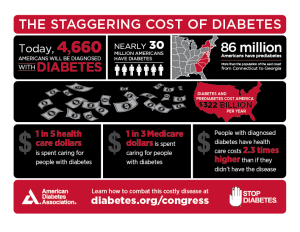 In the U.S. alone, the Centers for Disease Control and Prevention (CDC) has estimated that in 2012, 29.1 million people or 9.3% of the U.S. population had diabetes, and 27.8% of those people (8.1 million) were undiagnosed. The incidence of both Type 1 and Type 2 diabetes has been increasing.
In the U.S. alone, the Centers for Disease Control and Prevention (CDC) has estimated that in 2012, 29.1 million people or 9.3% of the U.S. population had diabetes, and 27.8% of those people (8.1 million) were undiagnosed. The incidence of both Type 1 and Type 2 diabetes has been increasing.
How much does diabetes cost?
Diabetes can be expensive to treat; the associated costs increase over time and with disease severity. According to the CDC, average medical expenses among people with diagnosed diabetes were 2.3 times higher than for people without diabetes.
According to the International Diabetes Federation (IDF), diabetes caused at least $612 billion (USD) in healthcare expenditures worldwide in 2014, or 11% of total healthcare spending on adults. And diabetes hits the poor hardest—the cost burden is higher for people in low- and middle-income countries.
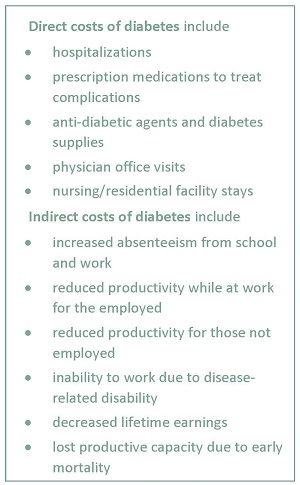 People in the United States have some of the highest healthcare costs in the world, with lifetime direct costs attributed to Type 2 diabetes estimated at around $283,000—that’s more than the median sales price of an existing home in September 2015 ($221,900). The CDC has estimated that total direct and indirect costs for diabetes in the U.S. were $245 billion in 2012. These costs are higher than in other countries with comparable per capita income levels.
People in the United States have some of the highest healthcare costs in the world, with lifetime direct costs attributed to Type 2 diabetes estimated at around $283,000—that’s more than the median sales price of an existing home in September 2015 ($221,900). The CDC has estimated that total direct and indirect costs for diabetes in the U.S. were $245 billion in 2012. These costs are higher than in other countries with comparable per capita income levels.
According to researchers at the University of East Anglia, studies of the impact of diabetes on the labor market have found strong adverse effects. Worldwide, men in particular are likely to have decreased chances of employment. The researchers found that men diagnosed with diabetes in China earned 22% less than Chinese men without the diagnosis, and their health care costs were 3 times higher. In the U.S., the study found that employment opportunities were roughly halved for women with diabetes, and that women with diabetes lose about $21,000 in earnings per year compared to American women without diabetes.
In March 2013, the American Diabetes Association (ADA) released a study of the direct and indirect costs of diabetes in the United States in 2012. The study showed that the total costs of diagnosed diabetes were to $245 billion in 2012, which was a 41% increase in the 5 years since the costs were last studied in 2007. That figure includes $176 billion for direct medical costs and $69 billion for indirect costs. And the costs continue to rise dramatically, both because of the increase in diagnoses and the rising costs for drugs and other medical expenses.
The study also showed that on average, Americans diagnosed with diabetes have medical expenses of about $13,700 per year, of which about $7,900 is attributed to diabetes.
According to Dr. Robert Ratner, Chief Scientific & Medical Officer of the ADA, “The cost of diabetes is rising at a rate higher than overall medical costs with more than one in 10 health care dollars in the country being spent directly on diabetes and its complications, and more than one in five health care dollars in the U.S. going to the care of people with diagnosed diabetes.”
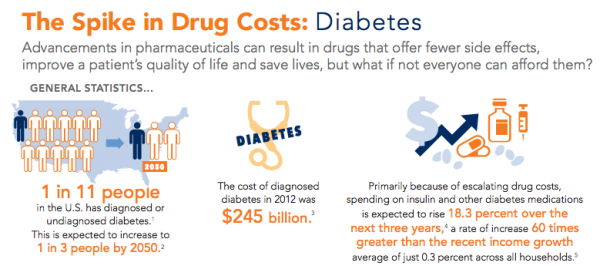
Source: Alliance of Community Health Plans; visit http://www.achp.org/wp-content/uploads/ACHP-Drug-Cost-Infographic-Diabetes.pdf to see full infographic.
What can you do?
We don’t yet know how to prevent Type 1 diabetes. However, eating a healthy diet, exercising regularly, getting enough sleep, and maintaining a healthy weight can help prevent Type 2 or gestational diabetes. The Diabetes Prevention Program Outcomes Study demonstrated that lifestyle interventions are a cost-effective method of diabetes prevention. Follow-up studies of clinical trials have shown that the benefits of lifestyle interventions last for 7 to 20 years, and that by delaying the onset of diabetes, such interventions reduce diabetes complications and result in longer lives and improved quality of life.
Common symptoms of diabetes include excessive thirst, frequent urination, and fatigue. If you or someone you know is experiencing these symptoms, your doctor can order tests that will reveal if your blood sugar is too high or you have impaired glucose tolerance. Early diagnosis and treatment can help prevent complications and may save you money, too.

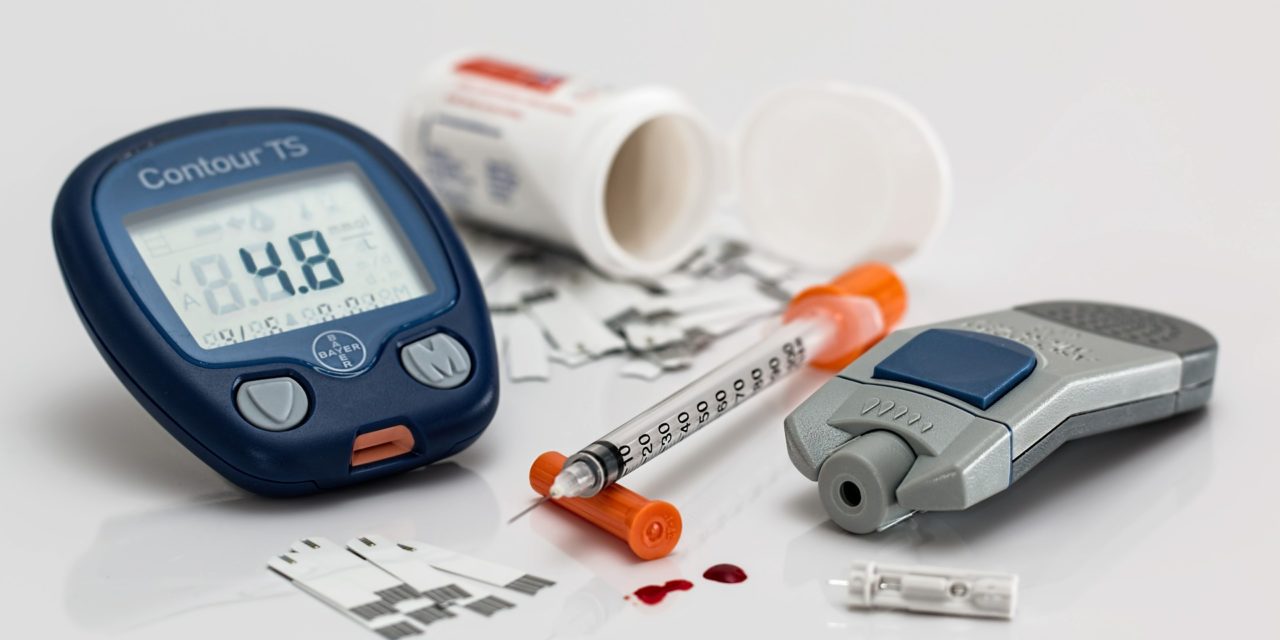

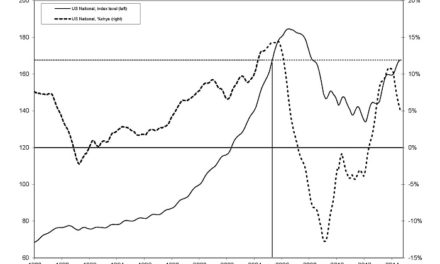


Recent Comments